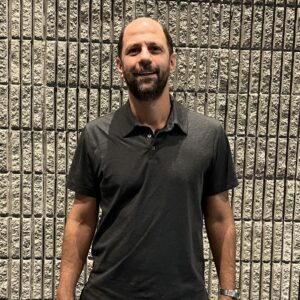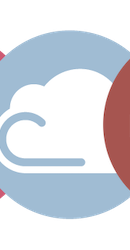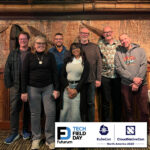|
|
 Johnny Halife presented for SOUTHWORKS at Tech Field Day at KubeCon North America 2025 |
This Presentation date is November 11, 2025 at 16:00-17:30.
Presenters: Johnny Halife
Delegate Panel: Calvin Hendryx-Parker, Colleen Coll, Gina Rosenthal, Guy Currier, John Willis, Tony Reeves
Cloud Scouts are Embedded (Human) Builders for the Cloud Native Frontier with SOUTHWORKS
Watch on YouTube
Watch on Vimeo
Most SRE teams were designed to ensure uptime, not to evolve products. They monitor systems but often lack the context to influence architecture or design. This segment examines why proximity — being part of the product team — is what transforms reliability into progress. When engineers operate as embedded partners, they surface deeper insights, close the gap between observation and action, and help the team own the outcome end to end.
Johnny Halife from SOUTHWORKS introduced Cloud Scouts, a new service designed to bridge the gap between SRE teams and product development teams. He explained how traditional SRE practices, while valuable for maintaining uptime and monitoring applications, often operate in silos, leading to “ticket battles” and a lack of context when issues arise. This SOUTHWORKS service addresses the evolving need for engineers who understand both the application and the platform, and can work directly with development teams to identify the root cause of problems, not just surface-level errors.
Cloud Scouts are senior software engineers who are embedded within customer teams, possessing domain expertise and the ability to quickly prototype solutions. They actively engage with software engineers, platform engineers, and architects to foster better communication and collaboration. These scouts also use AI-powered “companions” to analyze telemetry data, identify patterns, and propose fixes, while always maintaining human oversight to ensure accuracy and alignment with business goals. It is intended to provide hands-on support, rather than a consulting position.
The goal of Cloud Scouts is not to replace existing SRE or development teams, but to enhance their effectiveness by facilitating knowledge sharing, promoting end-to-end ownership, and accelerating the adoption of new technologies, such as AI. The engagement begins with a three-month assessment to evaluate the current state and establish a baseline, to achieve measurable improvements in areas such as alert fatigue, time to resolution, and overall system reliability. SOUTHWORKS emphasizes transparency and a collaborative approach, empowering customers to mature their practices and become more self-sufficient over time.
Personnel: Johnny Halife
Demonstrating AI-Assisted Development for Leading European Streaming Service with SOUTHWORKS
Watch on YouTube
Watch on Vimeo
A Cloud Scou is a forward-deployed engineer who joins the product team to co-own reliability, scalability, and evolution. Drawing from the Forward-Deployed Engineer for SR and AI-Managed DevCrew models, Scouts act as both architectural advisors and implementers — blending human judgment with AI-driven companions to build, test, and tune cloud-native systems. We walk through how this embedded approach fosters continuous improvement, strengthens technical decision-making, and creates a shared sense of accountability between Dev, Ops, and AI.
Johnny Halife from SOUTHWORKS presented an example of their work with a European streaming service facing issues with their electronic program guide (EPG). The EPG, built on Node.js, Lambda, S3, BigQuery, and XML, was experiencing blank displays due to ingestion problems. The issue was traced to an unexpected 413 error indicating that the request entity was too large, specifically related to image transformation failures. This problem was impacting viewers, who were seeing blank screens.
To address this, SOUTHWORKS employed a Cloud Scout, leveraging tools such as GitHub Copilot and their own MCP servers, which are connected to AWS CloudWatch. The process began with the scout prompting GitHub Copilot to create a Jira ticket, which was then assigned. The agent analyzed the error by running CloudWatch MCP, finding related logs, and contextualizing them within the solution codebase. This analysis revealed a missing validation and a data conflict between files, providing evidence-backed insights. The agent then proposed solutions, including code changes, which were compiled into a pull request.
The final step involved a code review by the Scout, along with standard organizational pre- and post-requisites, including SonarQube and linting. This process, previously taking days, was reduced to a few hours. By implementing this AI-assisted approach, the streaming service experienced faster issue resolution, fewer noisy alerts, and predictive scoring for deployments, resulting in a significant reduction in recovery time. This approach enabled them to transition from a defensive strategy of increased monitoring and tooling to a proactive approach, aimed at preventing issues before they arise by analyzing past incidents and identifying potential risks.
Personnel: Johnny Halife
What Would You Send a Cloud Scout to Fix with SOUTHWORKS
Watch on YouTube
Watch on Vimeo
This segment grounds the idea in practice. We’ll examine how embedded engineers have helped product teams go beyond reactive fixes — from automating post-mortems to co-designing self-healing infrastructure and predictive testing frameworks. The focus is on what changes when teams own reliability together: faster iteration, fewer handoffs, and more precise success metrics. We’ll close with an open discussion on how organizations can experiment with the Cloud Scout model — and what it signals for the next evolution of DevOps.
The presentation addresses the challenge of organizations needing to adopt new technologies, such as AI, but facing uncertainty and risk. The Cloud Scout model is presented as a way to mitigate these risks by embedding engineers to assess the current state, identify opportunities, and demonstrate the value of new tools and practices. The goal is to de-risk innovation and empower teams to embrace change, particularly concerning AI adoption, which is driven by business mandates but often faces resistance due to security concerns or a lack of clear implementation strategies.
A key aspect of the Cloud Scout approach is its focus on practical application and measurable business outcomes. The scouts aim to demonstrate, not just tell, how AI can be utilized to achieve specific goals, such as reducing alert fatigue or enhancing efficiency. While the initial engagement is typically a 40-hour-a-week commitment for three months to understand the problem and prototype a solution, it can evolve into a fractional engagement with a specialist or lead to a separate project for building out the solution. This approach emphasizes the importance of senior expertise in navigating uncertainty and mitigating risk associated with new technology adoption, ultimately enabling organizations to become more mature and effectively embrace innovation.
Personnel: Johnny Halife








